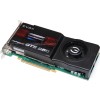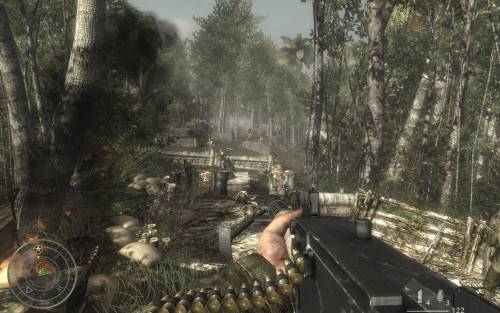- Qualcomm Launches Snapdragon 4 Gen 2 Mobile Platform
- AMD Launches Ryzen PRO 7000 Series Mobile & Desktop Platform
- Intel Launches Sleek Single-Slot Arc Pro A60 Workstation Graphics Card
- NVIDIA Announces Latest Ada Lovelace Additions: GeForce RTX 4060 Ti & RTX 4060
- Maxon Redshift With AMD Radeon GPU Rendering Support Now Available
EVGA GeForce GTS 250 Superclocked

The first mid-range offering of NVIDIA’s GeForce 200 series is here, in the form of the GTS 250. As a follow-up to the company’s 9800 GTX+, we already have a good idea of what to expect. But, various improvements aim to make things interesting, such as a redesigned PCB, smaller form-factor, single PCI-E connector, improved temperatures and refreshed pricing.
Page 3 – Call of Duty: World at War
While some popular game franchises are struggling to keep themselves healthy, Call of Duty doesn’t have much to worry about. This is Treyarch’s third go at a game in the series, and a first for one that’s featured on the PC. All worries leading up to this title were all for naught, though, as Treyarch delivered on all promises.
To help keep things fresh, CoD: World at War focuses on battles not exhaustively explored in previous WWII-inspired games. These include battles which take place in the Pacific region, Russia and Berlin, and variety is definitely something this game pulls off well, so it’s unlikely you’ll be off your toes until the end of the game.
For our testing, we use a level called “Relentless”, as it’s easily one of the most intensive levels in the game. It features tanks, a large forest environment and even a few explosions. This level depicts the Battle of Peleliu, where American soldiers advance to capture an airstrip from the Japanese. It’s a level that’s both exciting to play and one that can bring even high-end systems to their knees.



It’s not much of a surprise, but the GTS 250 ranked right alongside the 9800 GTX+. Oddly enough though, despite having less GDDR3 on hand, the 9800 GTX+ performed a bit better in each configuration. This isn’t necessarily fact though, as different runs may yield slightly different results.
|
Graphics Card
|
Best Playable
|
Avg. FPS
|
|
NVIDIA GTX 295 1792MB x 2
|
2560×1600 – Max Detail, 8xAA
|
90.283 FPS
|
|
NVIDIA GTX 285 1GB x 2
|
2560×1600 – Max Detail, 8xAA
|
63.401 FPS
|
|
Zotac GTX 295 1792MB
|
2560×1600 – Max Detail, 8xAA
|
52.461 FPS
|
|
Palit HD 4870 X2 2GB
|
2560×1600 – Max Detail, 8xAA
|
37.825 FPS
|
|
EVGA GTX 285 1GB SSC Edition
|
2560×1600 – Max Detail, 4xAA
|
45.866 FPS
|
|
Zotac GTX 285 1GB AMP!
|
2560×1600 – Max Detail, 4xAA
|
43.711 FPS
|
|
NVIDIA GTX 285 1GB
|
2560×1600 – Max Detail, 4xAA
|
41.510 FPS
|
|
Palit GTX 280 1GB
|
2560×1600 – Max Detail, 4xAA
|
38.192 FPS
|
|
XFX GTX 260/216 896MB
|
2560×1600 – Max Detail, 4xAA
|
32.723 FPS
|
|
EVGA GeForce GTS 250 1GB SC
|
2560×1600 – Max Detail, 0xAA
|
35.165 FPS
|
|
ASUS GeForce 9800 GTX+ 512MB
|
2560×1600 – Max Detail, 0xAA
|
34.596 FPS
|
|
NVIDIA GeForce GTS 250 1GB
|
2560×1600 – Max Detail, 0xAA
|
34.192 FPS
|
|
Diamond HD 4870 1GB
|
2560×1600 – Max Detail, 0xAA
|
30.372 FPS
|
|
Sapphire HD 4830 512MB
|
1920×1200 – Max Detail, 0xAA
|
40.157 FPS
|
|
Sapphire HD 4670 512MB
|
1920×1200 – Max Detail, 0xAA
|
28.101 FPS
|
Although we saw ample performance in our above graphs, in order to remain fully playable at 2560×1600, we had to remove all traces of anti-aliasing. With that configuration, the game ran quite well, on both the GTS 250 and 9800 GTX+.
Support our efforts! With ad revenue at an all-time low for written websites, we're relying more than ever on reader support to help us continue putting so much effort into this type of content. You can support us by becoming a Patron, or by using our Amazon shopping affiliate links listed through our articles. Thanks for your support!






